I recently moved into my own little studio in Siem Reap, Cambodia – my own space after 6 months of house-sharing and it started a thought process – how many beds have I slept in during the past 6 months?
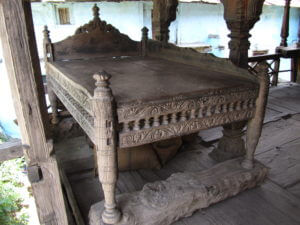
Turns out the answer was 25 and my new bed was number 26 – this doesn’t include one overnight train bunk on the Rajdhani express from New Delhi to New Jalpaiguri and three overnight flights; London Heathrow to New Delhi, Kolkata to Sydney and Sydney to Phnom Penh. It’s lovely to be in one place and settled for a period of time – I don’t want to be permanently on the move as a lot of the people coming to Siem Reap are. Many travellers arrive on an overnight bus from Thailand, Laos, Vietnam or Phnom Penh in the early hours of the morning or late at night and then spend a couple of days doing sunrise and sunset at the temples, drinking lager in Pub Street and buying baggy trousers in the market before ticking the list and moving on to the rest of the SE Asia tour. Many tourists that I have met here seem exhausted and not really enjoying themselves, constantly worried about being ripped off by the tuk tuk drivers and finding an ATM that works!
I haven’t got a ‘must do’ list for Cambodia; I am adopting the ‘soak it all in and see what happens approach’ to travel. I have arrived in the dry season which usually runs from November to April. The daytime temperature is in the low 30oC range and at night the temperature falls below 20oC, so a comfortable night’s sleep is possible without the noise of the A/C or a fan. The day length takes some getting used to as it is typically a 12-hour day from 6 am to 6 pm. I really do miss the long European summer days.
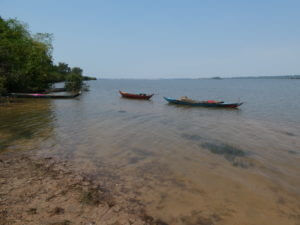
As luck would have it my school, home and yoga studio are all on the same road and as I have been issued with a bicycle, I can cycle to work in 5 minutes and also potter into town and around the countryside. I have discovered that the red dirt roads can be challenging to my posterior as my bike is not designed for off-roading.
Last weekend one of my colleagues and I cycled out to West Baray which is a reservoir built in the 11th century (around the same time as the Angkor temples) to supply the irrigation system in the rice paddies. It is 8 by 2 km in size and quite an amazing sight especially when you remember it is man-made.
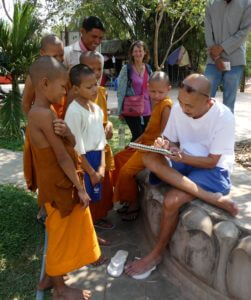
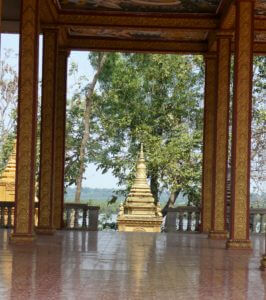
We arrived at the eastern end of the reservoir at the Svay Romiet Pagoda and had a wonderful view of the lake in very tranquil and peaceful surroundings. I don’t know why this temple (or wat) is called a pagoda as there was no multi-tiered pagoda to be seen. Many of these Buddhist temples are centres of community life and learning, train young monks and offer help to the needy. We met a young family visiting from Phnom Penh with an enchanting 8-month old baby, an artist from Japan who sells his work to raise money for a children’s charity in Cambodia and chatted to monks visiting from Siem Reap who had come out for lunch by the lake.
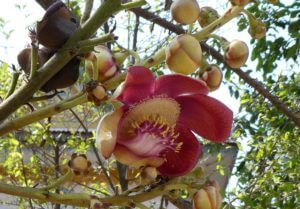
We sat by the lakeside and enjoyed our picnic – the temple cat joined us and various canines, which stayed at a very respectful distance which was surprising given the small size of our feline guard. There was a wonderful tree outside one of the temples called Couroupita guianensis, the flowers of which were just the most incredible colour and structure. The tree’s common name is the cannonball tree which refers to the shape of the fruit but says nothing about the beauty of the flowers! The flower structure is very complex as there are two types of stamens, fertile ones which produce pollen capable of fertilization and fodder staminodes which produce sterile food pollen for visiting bees who are the main pollinators. The flowers are nectarless but have an amazing scent which is particularly strong at night.
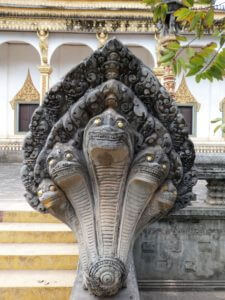
In India the tree is revered as the hooded flower is thought to resemble the naga and it is planted near Shiva temples. It is thought that in SE Asia this tree was mistakenly identified as the sacred sal tree and planted outside many Buddhist temples – was this the case here?
©Copyright overthehils.com 2018
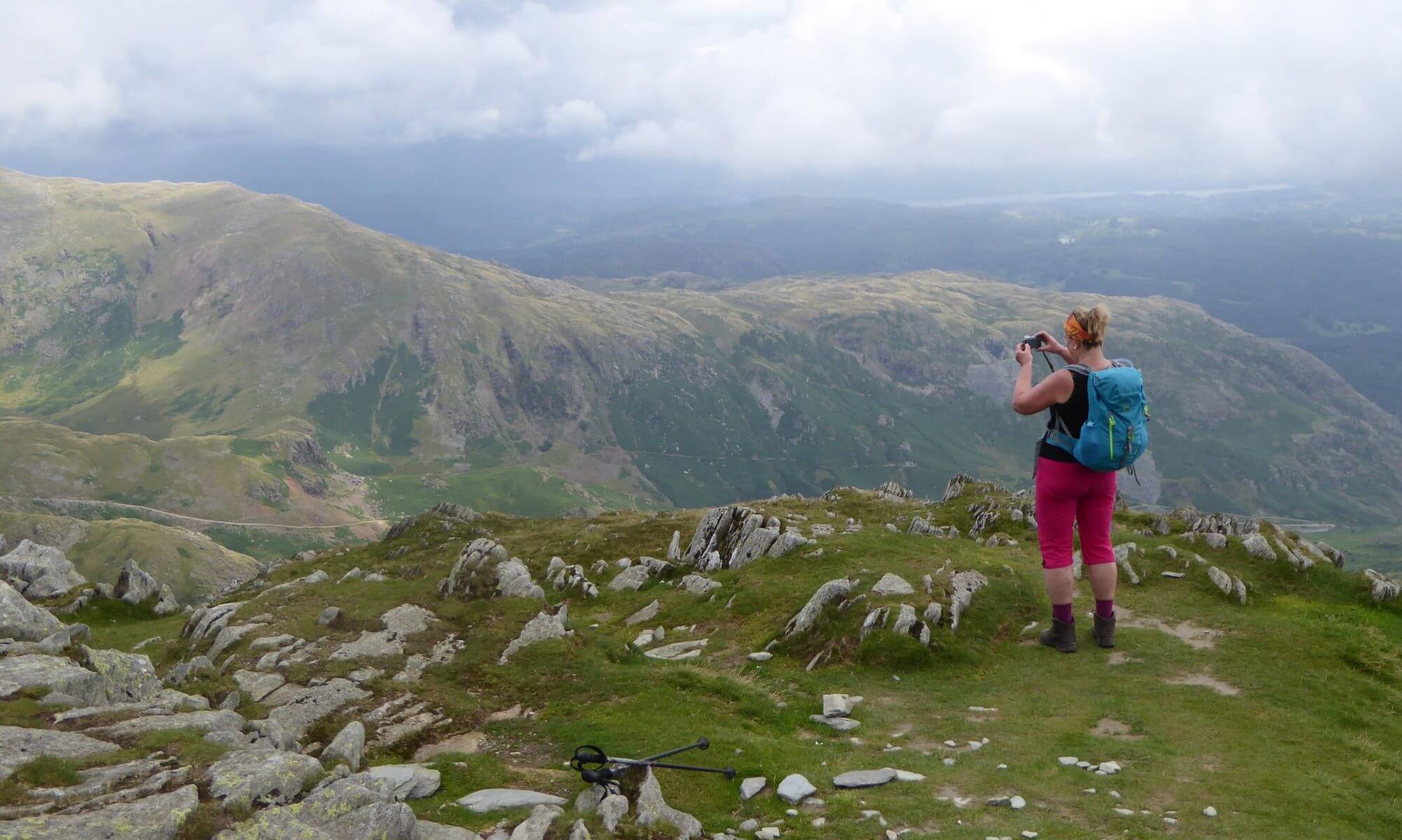
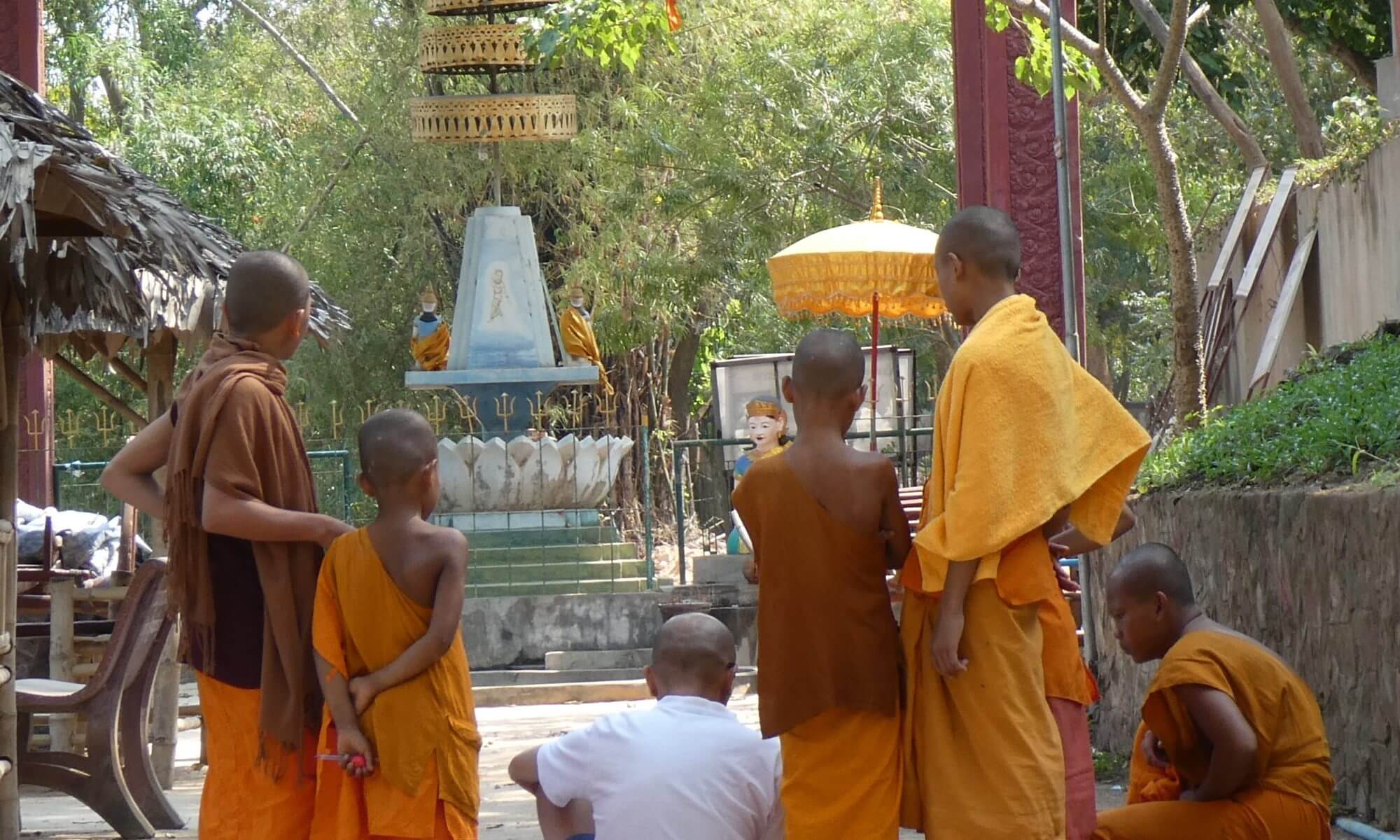
Most enjoyable read.
Thanks Annie. There will be a test on my return🤣x
You didn’t mention that your greatest excitement was being able to watch a plane take off, or is your spotters tendencies your guilty pleasure? Oooops
It was fun wasn’t it?? I’m sure I can work it into another story in the next 5 months…
Great to hear your news, may you be healthy and happy in Cambodia x
Thanks Grace. I am enjoying myself and doing my best to keep fit and stay healthy. Enjoying the fresh fruit and veg and of course, the YOGA!!
Hope your posterior is recovering? The cannonball tree looks stunning. Looking forward to your next instalment, take care x
My posterior is hardening up thanks and trying to get a bit fitter. Hard work though!!The flowering trees here are really amazing and I haven’t been able to identify some. Am going on my first birding trip next weekend and looking forward to that – going to a crane breeding site so very excited.
What wonderful experiences to last a lifetime and so glad you have, like me, discovered the benefits of yoga. keep it up. looking forward to reading more.
Hi Chris. Lovely to hear from you. Yes enjoying the yoga and all the different teachers – making me want to improve!!